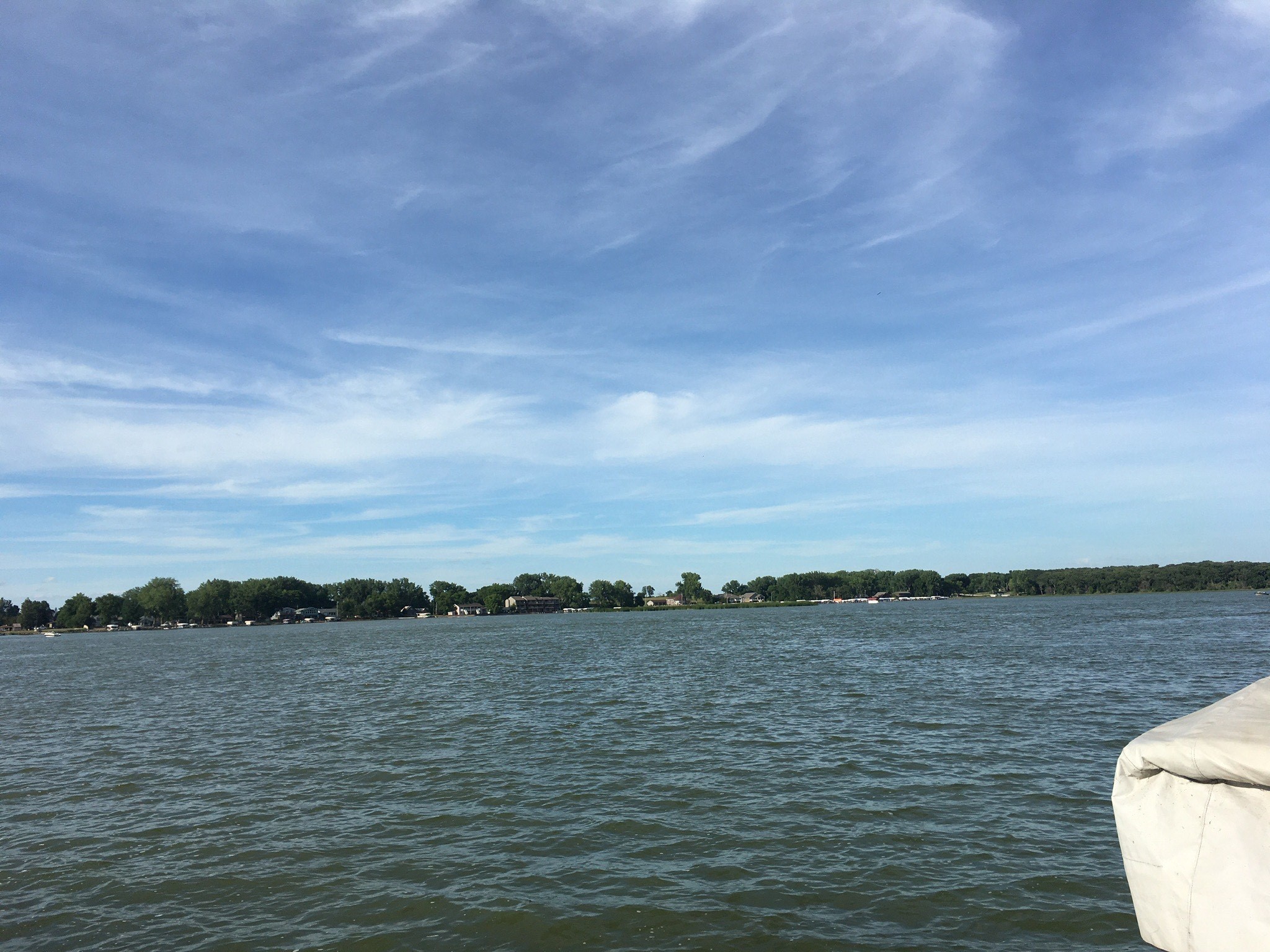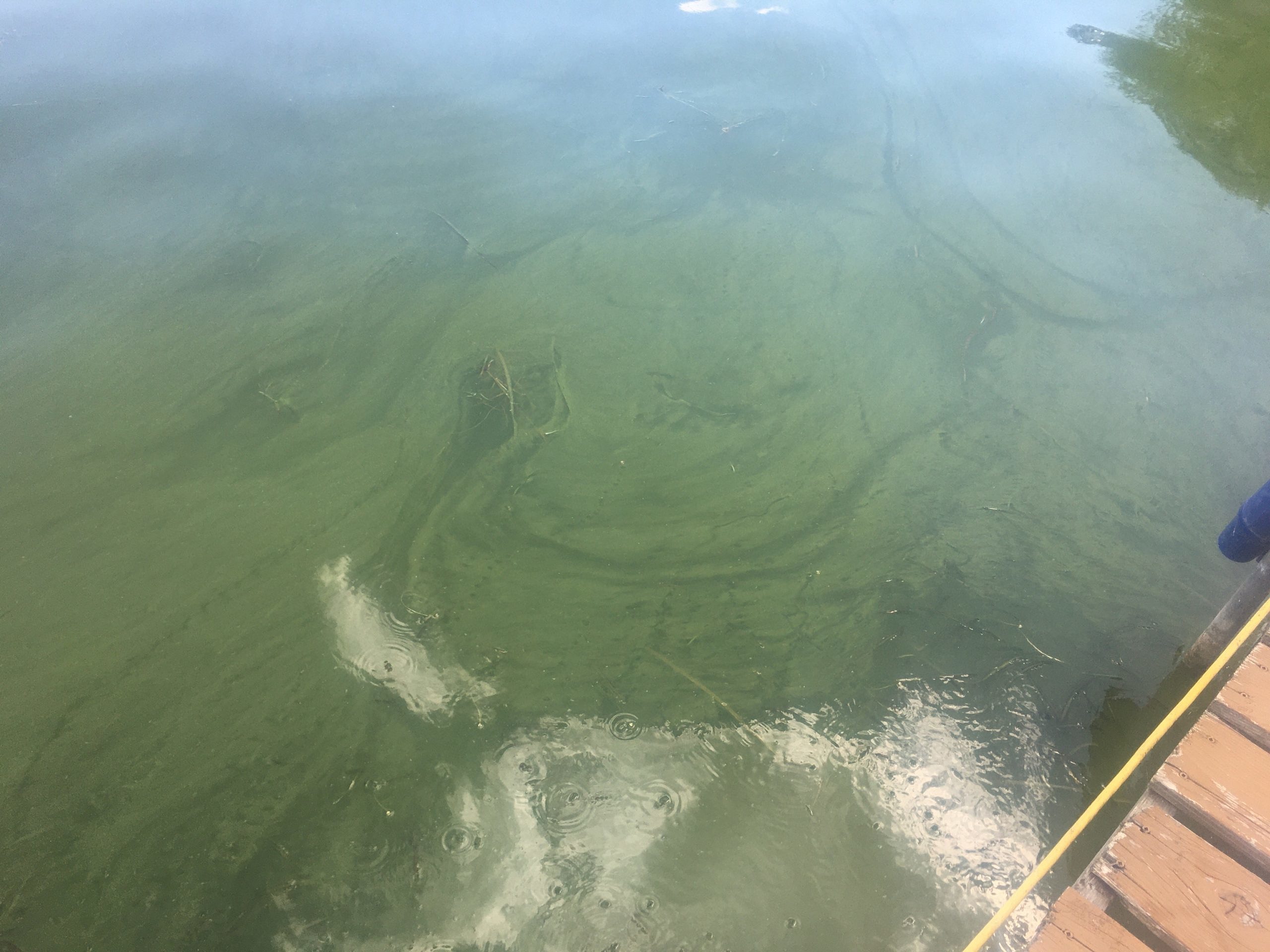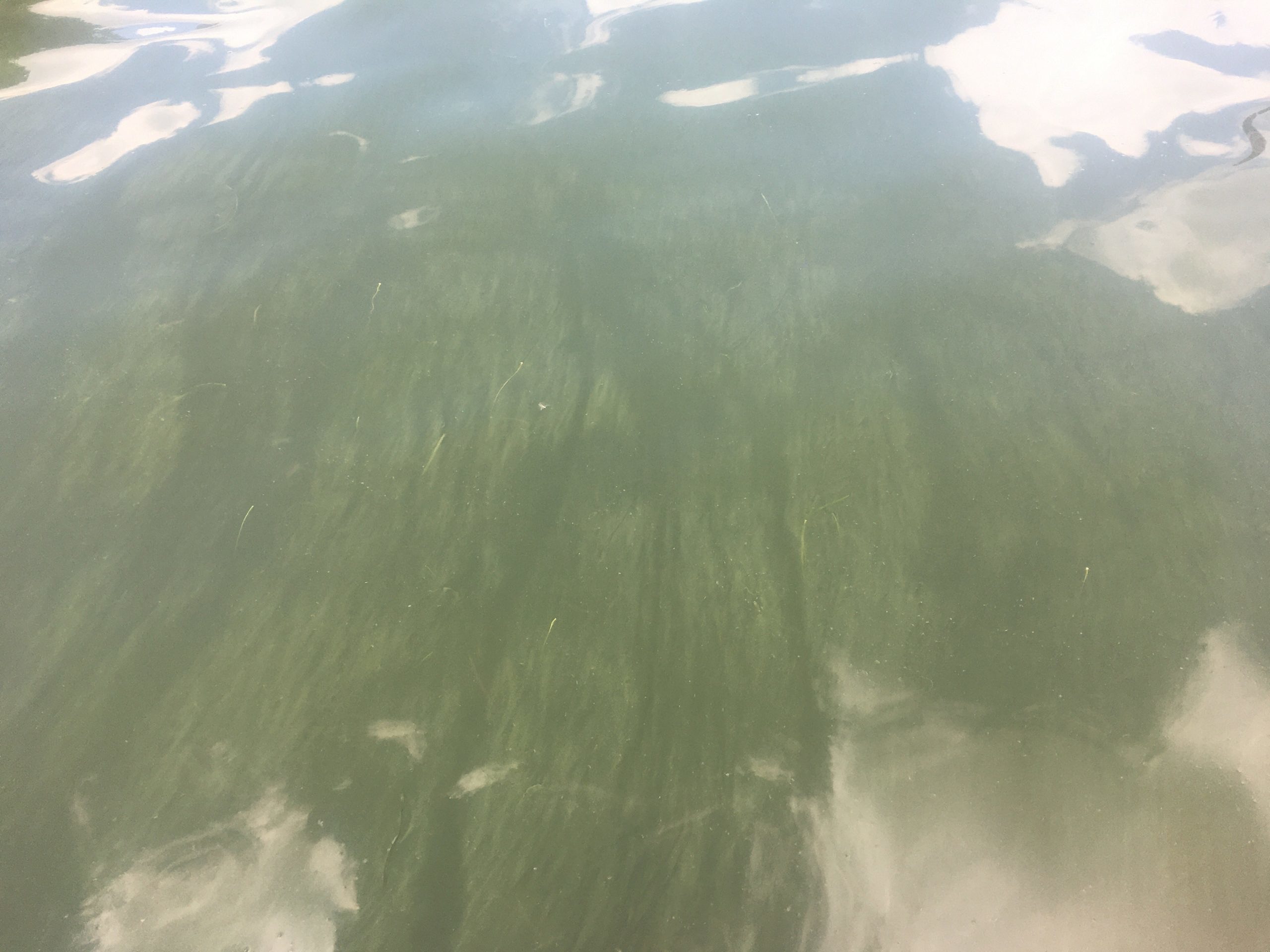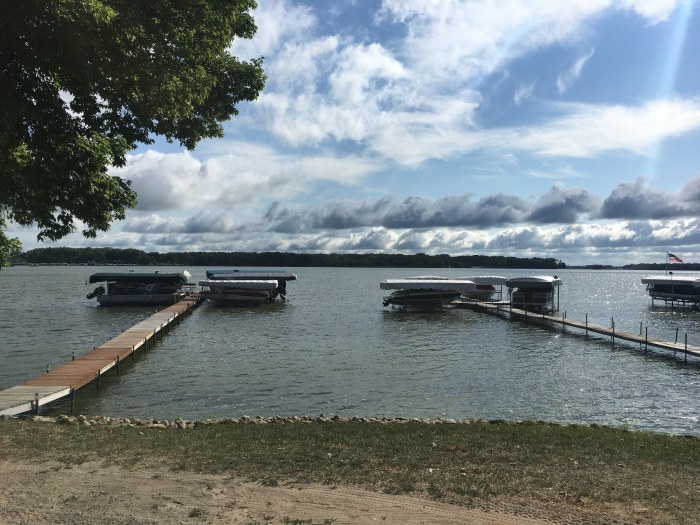Angelisa Belden is director of communications for the Iowa Environmental Council. This post first appeared on the council’s website on August 21. -promoted by Laura Belin
I was born and raised in Iowa, but hailing from the far northeast corner meant more visits to Minnesota lakes or Lake Michigan than central Iowa. That’s likely more due to family in those regions, but when I settled my family in Des Moines two years ago to work at Iowa Environmental Council, many of the recreational opportunities here were new to me. That includes Clear Lake.
Since returning to Iowa, I’ve enjoyed a weekend with friends each summer. The last two years were on Lake Okoboji but this year we relocated to Clear Lake because of COVID. Our group rented a cabin in early August along the shoreline. We didn’t have a boat and wanted to avoid public beaches due to the pandemic. Our plan was to float off the dock all day long.

Beautiful blue skies on Clear Lake, August 2020
Friday was fantastic – great water and beautiful sunshine. We fought our floaties all day though, so we decided to rent a lily pad on Saturday to make our time in the water a little easier. But as we trucked the rented water toy down the dock, I expressed concern at the color and consistency of the water.
Gone was the deep navy blue with green plants waving from below. Gone was the reflection of blue sky, pearly clouds, and bright sunshine. In its place: green, streaky goop that stretch from the shoreline to far beyond the dock.

Thick, green water in Clear Lake
I knew McIntosh Woods beach had an E. coli advisory that weekend, thanks to IEC’s Weekly Water Watch email alerts, but there was no advisory for harmful algae or toxic microcystin for Clear Lake. Was it safe to get in? Was this a simple bloom that would die off in a few days? Was it a bloom that would starve the fish and plants of oxygen, but bring no harm to humans? Or was it a blue-green bloom growing in size and spewing toxic microcystin?
Like the mom I am, I dispensed advice as we considered our options. If we do get in, there are rules: Don’t touch your face. Don’t let the water get in any drinks or near food. Shower immediately after getting out of the water. Wash your suit and towels when you get home without any other clothing items. We watched with dismay as a dog splashed off a nearby dock, knowing the dangers of toxic algae for dogs, and weighed the risks of potential human illness from nasty water against the benefit of fun, sun, and much-needed outdoor socialization. (As if coronavirus concerns weren’t enough!)
I found myself desperate to call someone for answers. But there is no one to call. The Iowa DNR beach monitoring program, while protecting public health by monitoring state beaches, can’t test all the water in Iowa. Counties and local communities can’t afford to test regularly, if at all. Private land owners might not even think of testing.
In addition, it is hard to determine if algae is dangerous. Sometimes it’s obvious, like bright turquoise or green paint or thick goop that covers everything in a green slick. Sometimes it’s a tinge of green on the shoreline or a streaky scum on top of the water. But sometimes it’s hard to see at all, or know whether the green algae on the water is indeed toxic. (See a slideshow of toxic blooms on our IEC Facebook page.)

Is this algae toxic? We’ll never know.
Unless we choose to invest significant resources in expanding testing and monitoring, or bomb our waters with sodium percarbonate that makes them safe to drink but not to swim, or come up with an ‘instant toxic algae test’, the best solution for us is to try to stop the growth of toxic algae. We can do that by lessening the amount of nutrient pollution in our lakes.
We had a great time in Clear Lake and enjoyed our time together. We invested a significant amount of money in the local economy – renting a lovely cabin and a lily pad, buying groceries and meals, and visiting outdoor venues. But if the water in Clear Lake, or any other lake or river, is green, people may stay away.
It’s time for state leaders to recognize the importance of all water bodies in Iowa – not just the Great Lakes – to our local economies and enact rules that will protect the our great assets and protect clean water.
Top photo of a public beach in Clear Lake, Iowa, provided by the author and published with permission.


1 Comment
What an evocative gentle argument for more water sanity in Iowa
I had the childhood experience of wading and playing and sliding around in a clean clear creek when my family visited friends in upstate New York long ago. Those were joyous days that I never forgot. One of the most important things we can do in Iowa is remind ourselves and each other that our water CAN be cleaner and that dirty lakes and rivers are not our inevitable destiny. Thank you to the IEC for working hard on that.
PrairieFan Thu 27 Aug 1:37 PM